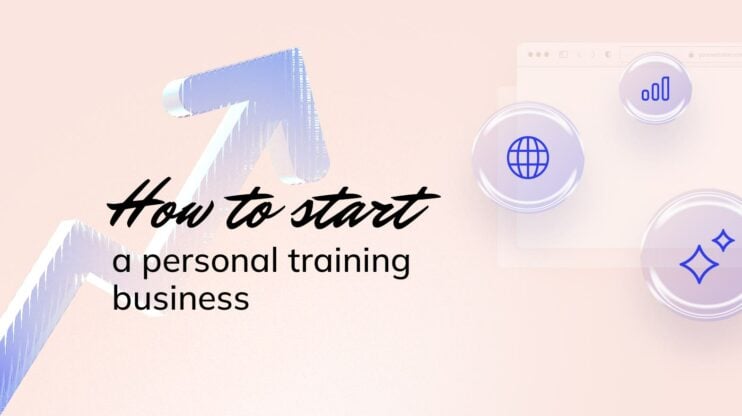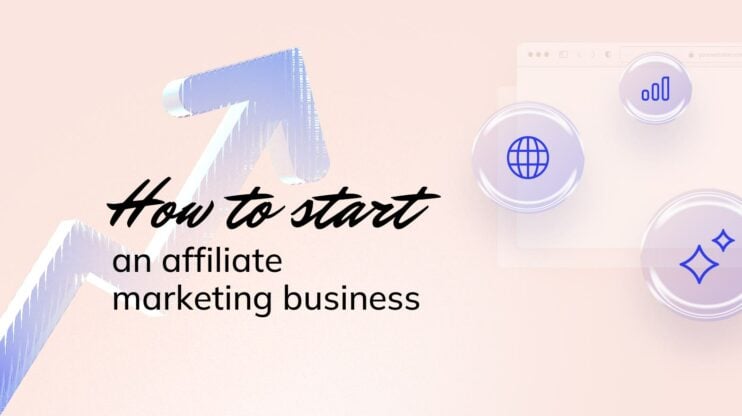A business plan is an essential tool for both guiding your decisions and attracting potential investors, laying the groundwork for a successful venture. This article will cover the key components of an effective business plan, from outlining goals and strategies to understanding different formats and tailoring them to specific needs.
The business planning process offers exciting opportunities, such as clarifying your vision, identifying competitive advantages, and securing funding. Crafting a solid plan can inspire confidence among stakeholders and provide a clear roadmap to navigate the challenges and growth opportunities ahead.
FAQ
How do I write a basic business plan?
To write a basic business plan, start with an executive summary that outlines your business idea, then describe your products or services, target market, business structure, marketing strategy, and financial projections. Keep it concise, clear, and focused on your goals and strategies.
What are the 7 steps of a business plan
The 7 steps of a business plan include:
- Executive Summary
- Business Description
- Market Analysis
- Organization and Management
- Product Line or Services
- Marketing and Sales Strategy
- Financial Projections
What is a business plan template?
A business plan template is a pre-formatted document that provides a structured outline for organizing your business information, goals, strategies, and financials. It guides you through each section of a plan, making it easier to create a comprehensive and professional business plan.
What is a 3/6/12 month business plan?
A 3/6/12 month business plan outlines specific goals and actions to be achieved within 3, 6, and 12 months. It helps businesses set short-term milestones and track progress toward long-term objectives.
What are the 5C's of a business plan?
The 5 C’s of a business plan are:
- Company: A detailed overview of the business, including its mission, vision, and goals.
- Collaborators: Key partners, suppliers, and stakeholders who help the business operate effectively.
- Customers: The target audience or market segment the business aims to serve, including customer needs and behaviors.
- Competitors: Analysis of direct and indirect competitors, highlighting what differentiates the business.
- Cash flow: A financial overview focusing on income, expenses, and projections to ensure the business can maintain positive cash flow.

Create your online store in minutes!
Looking to sell online? Develop and launch your store with 10Web AI Ecommerce Website Builder.
Business plan format
A comprehensive business plan not only guides internal decision-making but also communicates the venture’s vision and viability to potential investors and stakeholders. The business plan format serves as a blueprint, outlining the strategic direction, operational framework, and financial projections necessary for success.
Executive Summary
An executive summary gives a quick overview of your business plan. It shows the key points about your company, what you offer, and your goals. This part is important because it’s often the first thing people read.
Mission Statement
Your mission statement defines the core purpose and focus of your business. It should clearly communicate why your company exists and what it aims to achieve. When crafting this, pinpoint the unique value you offer to your customers. Reflect on your products or services and how they benefit the market.
Consider the specific needs your business addresses and the goals you’re striving to meet. If you’ve already outlined a company description in your business plan template, ensure that your mission statement aligns seamlessly with it, reinforcing your overall business goals.
Vision Statement
The vision statement outlines the long-term aspirations of your company. It’s an inspiring declaration of your future objectives and helps guide strategic decisions. Articulate clearly where you see your business heading and how you intend to make an impact.
When writing this section, consider your market positioning and unique value proposition. Think about how you want your brand to be perceived in the coming years. This guiding vision helps keep you and your team focused on big-picture goals, fostering a shared understanding of future success.
Company Overview
This part provides a snapshot of what your business is all about. Include key details like your business name, location, and the basic setup of your operations. Mention your primary products or services and the market you serve. In your business plan template, this serves as a quick reference for readers interested in a deeper dive.
Don’t forget to include any standout features or accomplishments that set your business apart. Whether it’s an innovative product or a pioneering service, highlight it here. This overview should mirror the engaging appeal found on your business plan cover page, capturing attention from the outset.
Company Description
Your company description tells readers what your business does. It should be clear and to the point. Start with your company name and where you’re based. Then, explain what products or services you sell.
Next, talk about your target customers. Who are they? What problem do you solve for them?
Lastly, mention any big wins or special things about your business. Have you won awards? Do you have a patent?
Business Structure
Your business structure clarifies how your company is organized. It tells if you’re a sole proprietor, in a partnership, or an LLC. Each setup has different legal and financial implications, so it’s vital to choose the structure that suits your operations best.
For an entrepreneur, this choice impacts taxes, liability, and administrative complexity. Clearly defining your structure helps in communicating with investors. They need to understand how decisions are made and who holds responsibility within the organization.
Business Strategy
Business strategy sets the path you take to reach your goals. This includes defining your market, understanding your customers, and identifying your competitive edge. A solid strategy spells out how your business concept and branding align with market needs.
Creating a strategy means choosing the right mix of products or services that let you stand out. Keep your approach flexible to adapt to changes in market conditions and customer preferences.
Business Goals
Business goals outline what you aim to achieve in the short and long term. These could include sales targets, market expansion, or brand recognition milestones. Clearly defined goals guide daily operations and long-term decisions.
An entrepreneur uses these goals to measure progress and make informed choices. Consider what resources or support you may need to meet these targets, and outline any steps necessary to get there. Prioritizing goals helps focus efforts on what matters most to the success of your business.

Create your online store in minutes!
Looking to sell online? Develop and launch your store with 10Web AI Ecommerce Website Builder.
Market Analysis
In this part of your business plan, you focus on examining the industry you’re entering, identifying your target customers, and understanding your competitors. This assessment helps you align your planning with market realities.
Industry Analysis
Understanding the industry landscape is the first step. You need to look at market trends, growth rate, and market size. These factors give you insights into opportunities and challenges.
Use data from reliable sources to explain the current state and future predictions of the industry. This helps in discovering potential areas of demand. Knowing the regulatory environment and technological advancements can further shape your approach. Both of these elements affect how your business can thrive in this space.
Target Market
This section focuses on pinpointing your ideal customer’s needs and preferences. Examine demographics such as age, gender, income level, and location. These details help you craft a profile of your typical customer.
Use surveys and feedback tools to gather insights directly from your audience. This data will guide you in tailoring your products or services to meet specific needs. Understanding their buying behavior and preferences will also help you design effective marketing strategies.
Competitive Analysis
Evaluating your competition involves identifying their strengths and weaknesses. This step helps you find your unique value proposition. List the key players in your market and compare their products, pricing, and market positioning to yours.
Analyze their marketing strategies and customer feedback to see where they succeed or fall short. By understanding what your competitors do, you can position yourself differently and highlight what makes your business special. Recognizing gaps in the market gives you a chance to attract customers effectively.

Create your online store in minutes!
Looking to sell online? Develop and launch your store with 10Web AI Ecommerce Website Builder.
Products and Services
In your business plan, the products and services section highlights what you’re offering and how it benefits your customers. Clear descriptions, including unique features and value propositions, distinguish your business in a crowded market. Protection and life cycle aspects help maintain a competitive edge.
Value Proposition
Your value proposition explains why customers should choose you over other options. It should be clear and specific. It identifies the unique benefits you offer that aren’t available from competitors. This could include innovative features, superior customer service, or cost advantages.
Clearly outline what problems your products or services solve. Discuss how they improve your customers’ lives or businesses. For services, this might involve a seamless user experience and impactful results. For products, you could focus on high quality or cutting-edge technology.
Use concise language that speaks directly to your target customer’s needs and desires. A well-crafted value proposition helps potential customers quickly understand why they should choose you.
Intellectual Property
Intellectual property (IP) is essential for protecting the unique aspects of your business. This includes trademarks, patents, copyrights, and trade secrets. Securing IP rights defends your products or services from imitation and maintains competitive advantage.
Patents safeguard inventions or processes, while trademarks protect brand names and logos. Copyrights cover original content like text, music, or software. Trade secrets involve confidential business information that gives you an edge.
Explain any IP your business holds or plans to acquire. Describe how it strengthens your position in the market and increases value. This often reassures investors about the security of their investment and the business’s future.
Product Lifecycle
The product lifecycle outlines the stages a product or service goes through from inception to decline. Understanding this helps in planning marketing and development strategies. The typical stages include introduction, growth, maturity, and decline.
During the introduction phase, focus on building awareness. As growth occurs, improve features and expand your customer base. Maturity often requires maintaining market share amidst competition, possibly through improvements or pricing strategies. In the decline stage, decide whether to revamp or discontinue the offering.
Share details about where your products or services currently stand in their lifecycle. Discuss strategic plans to manage each phase effectively, ensuring longevity and profitability.
Marketing and Sales Strategy
To create a powerful business plan, you need a focused marketing and sales strategy. This part involves understanding how you will reach your target audience and convert interest into sales through well-defined actions.
Marketing Plan
Your marketing plan outlines the path to engage with your target audience effectively. Focus on identifying your customer segments and crafting messages that speak directly to them. Understand their needs and preferences to design campaigns that stand out.
Utilize a mix of digital marketing channels such as social media, email, and content marketing to widen your reach. Set clear goals for each channel to track your success. Leverage data analytics to measure results and refine your approach over time.
Sales Plan
A sales plan is a roadmap for converting leads into customers. Identify the sales channels that best suit your product or service, whether it be online platforms, retail outlets, or direct sales.
Define your sales goals and the steps to achieve them. Train your sales team to highlight the benefits of your product in a way that resonates with your customer segments. Consistent evaluation and adjustment of your strategies will keep your sales efforts on track.
Customer Acquisition
Bringing new customers on board requires a thoughtful approach. Focus on building relationships with your potential customers. Personalization is key; tailor your messages to address the unique needs of different customer segments.
Use both inbound and outbound marketing tactics to attract and engage potential customers. Special offers, promotions, and excellent customer service can help in retaining these clients. Track the cost of acquiring customers to ensure that your strategies are cost-effective and lead to growth.

Create your online store in minutes!
Looking to sell online? Develop and launch your store with 10Web AI Ecommerce Website Builder.
Operational Plan
An operational plan outlines how your strategic goals will be executed on a day-to-day basis. It covers the nuts and bolts of your operations, focusing on key activities, business operations, and supply chain management.
Business Operations
Business operations form the backbone of your daily work. They involve everything from managing personnel to handling equipment and facilities. Smooth operations are critical for running your business efficiently, impacting everything from costs to customer satisfaction. Outline your processes for order fulfillment, inventory, and customer service. Use lists for tasks and responsibilities, and tables to summarize roles. Keep your processes simple and clear, so your team knows exactly what to do. In this way, you can address potential issues quickly and maintain productivity.
Key Activities
Key activities are the essential tasks that drive your business forward. Identify these activities by focusing on what sets your business apart from competitors. These could include research and development, marketing strategies, or production techniques. By prioritizing these activities, you emphasize their impact on achieving your goals. Make a list of these tasks and assign responsibilities clearly. Be sure to regularly review and adjust them to adapt to changing demands in your market. This nimble approach helps you stay competitive and deliver quality products or services.
Supply Chain Management
Supply chain management involves coordinating all parties involved in delivering your product to customers. This includes selecting reliable suppliers, maintaining good communication, and managing logistics. Effective supply chain management keeps your operations smooth and cost-effective.
Build strong relationships with your suppliers to ensure on-time deliveries and high-quality materials. Use digital tools to track shipments and inventory levels, reducing the risk of disruptions. Keeping everything well-organized helps prevent bottlenecks and delays, enhancing customer satisfaction and business performance.
Organization and Management
In this part of your business plan, you’ll outline how your company will be managed and organized. You’ll detail the leadership team, present the organizational chart, and discuss the advisory board’s role.
Leadership Team
Your leadership team is the backbone of your company. Clearly describe who is at the helm and their roles. It’s crucial to include brief profiles of each member, highlighting their experience, skills, and how they contribute to your goals. Mention any unique expertise they bring to the table, helping to reassure stakeholders about the team’s capability.
Identify each team member’s role, such as CEO, CFO, or CTO. By doing so, you demonstrate how management aligns with your company’s strategic vision. Clear roles reduce operational costs by maximizing efficiency and productivity.
Organizational Chart
The organizational chart visually represents your company’s structure, mapping out different departments and lines of command. It shows who is responsible for each area, simplifying communication and decision-making processes. This chart should be straightforward, including all major roles and how they interconnect.
A well-organized structure can streamline operations, helping reduce unnecessary operational costs. Knowing who reports to whom ensures everyone understands their responsibilities and where they fit within the company. Consider using bold text for key positions or divisions to enhance readability.
Advisory Board
An advisory board can provide valuable insights and guidance. List the members of this board, along with their backgrounds and areas of expertise. These advisors bring external perspectives, helping you address challenges and make informed decisions.
Their varied experiences can be a strategic advantage, often guiding your business through complex scenarios. Highlight specific contributions they can make, like offering advice on financial planning or market expansion. Having a reliable advisory board strengthens stakeholder confidence and supports long-term business success.

Create your online store in minutes!
Looking to sell online? Develop and launch your store with 10Web AI Ecommerce Website Builder.
Financial Plan
A solid financial plan outlines how your business will generate revenue, manage spending, and predict financial outcomes. It ensures that you have a clear path to financial stability and success.
Revenue Streams
Identifying your revenue streams is vital. These are the different ways your business will earn money. Typical streams include sales of products or services, subscription fees, licensing deals, or advertising revenue.
Having multiple streams can strengthen your financial stability. Be specific about each source of income, giving estimates where possible. This can help when seeking investment, as it demonstrates a clear understanding of how your business will bring in cash.
Budget and Funding
Creating a budget helps manage your money effectively. It involves detailing all expected costs, from production to marketing, and comparing them to your anticipated income.
Include areas like operational expenses, salaries, and material costs. Funding is another key part. Indicate whether you’ll use personal savings, seek investors, or apply for loans. Clarify how you’ll allocate funds over time to cover both startup and ongoing expenses.
Financial Projections
Financial projections give a forecast of your business’s financial health. These include profit and loss statements, balance sheets, and projected cash flow. They offer a glimpse into expected performance over the next few years.
Projections help in planning for future growth and identifying potential risks. Regular updates are important as they can highlight discrepancies between actual and expected performance, allowing for timely adjustments.

Create your online store in minutes!
Looking to sell online? Develop and launch your store with 10Web AI Ecommerce Website Builder.
Appendices and Supporting Documents
When creating a business plan, don’t forget the appendices. This part holds extra documents that back up the main content of your plan. Appendices help detail complex points and can include charts, financial projections, and legal documents.
Consider adding illustrations like graphs or tables to support previous sections. For example, if your plan talks about growth trends, a graph showing past success can be helpful. Visuals can make your plan more engaging and easier to understand.
Legal documents often find their place in the appendix. These might be licenses, permits, or patents related to your business. Including these shows readers that you’re prepared and compliant with legal standards.
You might also add financial statements and executive team resumes to give more details about your business’s background and leadership. This adds to your plan’s credibility.
If you’re using a business plan template, check if it suggests specific materials for your appendices. Templates may offer useful prompts to ensure you cover all bases.
Supporting documents could include letters of recommendation or agreements with stakeholders. These show endorsement and support from others in your industry. Depending on your business needs, your appendix can be tailored to convince stakeholders of your plan’s feasibility and strength.
Organize the appendices neatly to keep the information accessible. Use a table of contents if you add many items, making it easy for the reader to find what they are looking for.
Conclusion
A well-crafted business plan is an important aspect in guiding your business decisions and attracting potential investors. This article covered the key components of an effective plan, including defining your mission, vision, and strategy, analyzing your market and competitors, and outlining your financial projections.
With this complete approach, you can clarify your goals, communicate your value proposition, and plan for growth. Understanding and applying these elements will help you navigate challenges, secure funding, and position your business for long-term success.





















